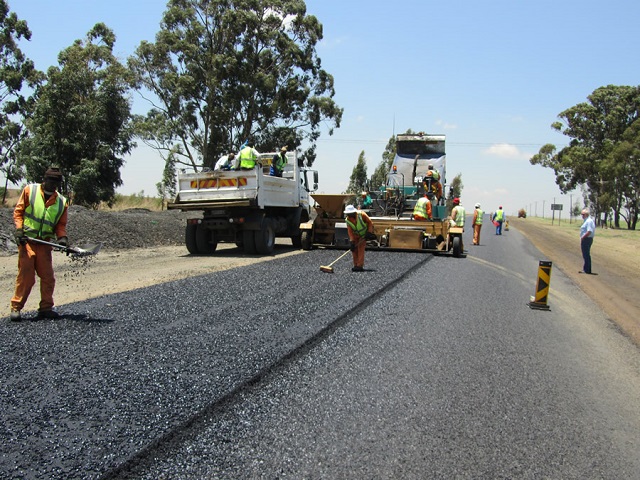EDITORIAL COMMENT: Improved Govt investment in roads laudable

Many parts of the country had become inaccessible because of bad roads. In some areas, motorists were carving alternative routes for themselves as formal roads were now riddled with features that were so bad that referring to them as potholes had become an understatement. In others, roads actually no longer existed. This was the situation in most rural areas.
Transport operators, careful to preserve the condition of their vehicles, had withdrawn them from the bad routes. Those that continued plying the routes were charging higher fares than normal in an effort to make up for slowed turnaround times, higher fuel consumption and the damage that was caused on their vehicles as they drove on the rugged roads. In the end, it was the rural commuter who suffered.
In addition, a number of trunk roads that are normally tarred have become extensively potholed and narrow, an obvious example being the Harare-Beitbridge highway.
Indeed some 17 years of neglect and underfunding had taken a toll on roads. However, the Government has moved to rehabilitate them in time for the wet season in the next few months.
Reports say Treasury-funded road construction projects have gone up this year by over 200 percent under the new administration when compared to the previous political administration and at least 50 percent when compared to the Rhodesian administration.
As part of its “deliverables” under the party’s election manifesto for the July 30 poll, Zanu-PF promises to “rehabilitate all roads in towns and major cities to world class standards. Rehabilitate (the) rail network system, including around industrial areas.”
The party also outlines its plan to re-route all roads in major towns in conformity with a new national transport set-up and rehabilitate ancillary transport infrastructure including road signs, traffic lights, street lighting, stormwater drainage systems including creating and maintaining servitude lanes/areas as necessary.
Treasury has released about $100 million while the Zimbabwe National Roads Administration has made available $54 million which has seen the reconstruction or resealing of 504km of surfaced roads, with 1 100km of surfaced roads being premix pothole patched between January to June alone, compared to last years’ total of 721km and 7 501km respectively.
Between January and June, 18 600km of rural gravel roads were graded, 914km gravel roads were regravelled, 40 damaged bridges were repaired while 317 new culverts were constructed.
“This is unprecedented. I can safely say ‘yes’, it is because of the new dispensation. I have 10 years as a provincial roads engineer and I have never received this much money from Treasury. We have people who have been working in the Department of Roads since Rhodesia and they have not done this much road construction in a year,” said Mashonaland East provincial road engineer Jaravani Kangara.
In the Midlands one of the major bridges that the province has since completed with support and funding from the new administration was the Mwenezi Bridge in Mberengwa that had cut connection between Mberengwa and West Nicholson.
“With support and funding from the new Government administration, we have also repaired the famous Gokwe gully that had become a menace cutting off Gokwe Town from most of the Gokwe South districts,” said the Provincial Roads Engineer, Eng Stephen Kamutema.
“Apart from adhering to our routine roads maintenance work, we have also completed some major road maintenance like the Gokwe-Siyabuwa Road, we have managed to maintain that road and connect it with Matabeleland North. We have also maintained the 133km Gokwe-Choda road and roped in the services of the community there to clear the bushy road sides. Approximately we have used over $7 million on roads and bridge repairs in the province so far and with the support from Government, we have lined up more road projects in the province.”
In Matabeleland North, work has started on the Bulawayo-Nkayi road after money was made available. The Bulawayo-Tsholotsho road is being attended to as well.
Many other roads across the country are being rehabilitated too, a welcome development that will go a long way in easing the burden the people, particularly the rural folk, were facing. Now that the routes are being or have been improved, the people are able to move around faster and pay reasonable fares. They can now access important services such as health care and education if clinics and schools are distant from their homes.
The business sector benefits as well. This includes rural businesses that regularly need to travel to growth points to buy stock for sale in their shops in rural outposts. They are now moving more easily, spending less on fuel. The high transport costs they had gotten used to are likely to decline as the roads are better.
The same applies to rural transport operators. We expect those that had withdrawn their vehicles to return to their routes, now more easily navigable.
Also, they are expected to reduce their fares as wear and tear on their vehicles will be not as bad and fast while fuel consumption should decline as cars move more efficiently on smoother highways.
We are indeed happy that the Government is investing so much in the national road network. This is a good start for the new administration and we hope that such routine maintenance and rehabilitation will continue on a more regular basis and be escalated to tarring of most roads countrywide.











Comments